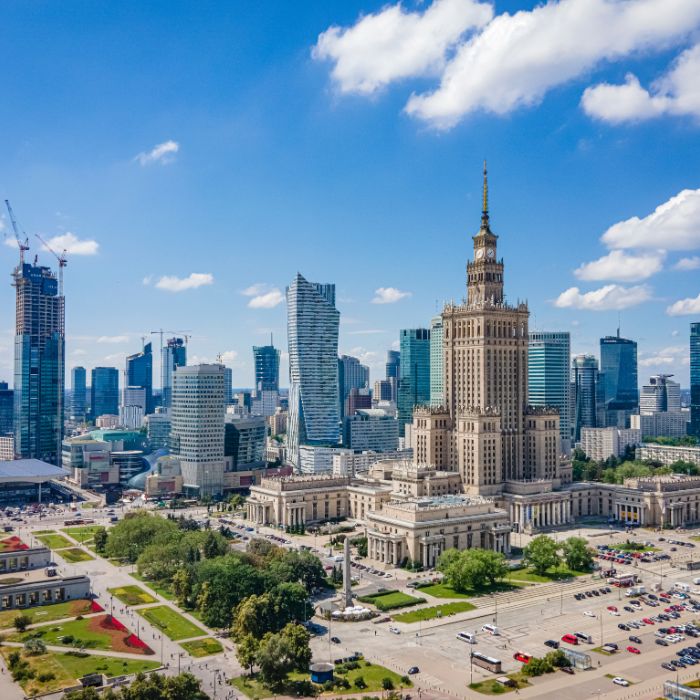A European COVID-19 Remobilisation Strategy
April 22, 2020
By: Jo Antoons, Andreia Ghimis
Just a short time ago, Brexit appeared to be the greatest threat to the European Union in modern times. But the EU weathered that storm, largely by taking a united approach to the political challenges brought on by the United Kingdom’s exit from the Union. The COVID-19 pandemic is a health crisis that has required an entirely different approach—national quarantine rules (often involving border closures) that divide, rather than unify the EU.
The EU confronts COVID-19 from a distinct position as it comprises 27 individual countries with rules for their own respective territories, which together, represent one single economic trading zone. The European Single Market is one of the EU’s biggest achievements, ensuring the free movement of workers, service providers, capital and goods without internal border controls between and among the EU countries. However, the current public health emergency has swiftly halted these freedoms.
Typically, movement into and around the EU follows the rules of the Schengen Area: characterized by external border checks when entering the region that covers nearly all EU countries, and then free passage across borders within the Schengen Area. Coronavirus-related travel restrictions have completely changed the landscape. Even more unprecedented is that various European countries, perceiving the EU travel ban introduced (until May 15) to be insufficient, have reinstated internal borders. This means that not only is travel into the EU restricted, but also movement between and among EU countries is currently largely controlled.
This issue creates a host of challenges for companies looking to bring talent to one or more European jurisdictions to address their business needs.
In the first instance, businesses are trying to enable their employees already in the EU to work from home as much as possible. This brings changes to the work patterns of several non-EU nationals working from within EU territories and raises questions related to their immigration, employment and social security status. A number of these issues have been touched upon in our previous blog post.
Alternatively, several sectors will see the need for global mobility becoming more imperative. Border closures threaten business activities and the economies of the countries they impact. As such, European authorities are attempting to limit the impact of COVID-19 on companies as much as possible and have provided guidelines for EU Member States to consider when establishing rules for their internal border controls.
Is internal border crossing still possible?
It is important to note that certain categories of workers—such as cross-border workers—can still cross internal borders.
In a communication issued at the end of March, the European Commission (EC) emphasised that EU countries should also allow certain categories of Posted Workers (workers employed in one EU country who travel and work temporarily in another EU country to provide services) and Seasonal Workers (such as those working in the agriculture sector) to cross internal borders. The EC is of the opinion that Posted Workers working in an essential sector, such as Information and Communications Technology, should be allowed to cross internal borders. Additionally, if a specific country still allows citizens and residents to work in a particular sector, it should also allow Posted Workers to enter its territory to work in that sector.
It is important to note that these are just guidelines, and actual implementation will differ from country to country. Whilst some countries will likely maintain a more relaxed approach, others will adopt and maintain stricter rules. The variance between and among countries can make planning difficult, but it is important for companies to see that business movement could still be possible, because internal border closures are not as impermeable as they first appeared.
Fragomen is mobilising its powerful government strategies program to ensure we can help clients benefit from all available mobility options in the current environment, as limited as they may be. The return to the European Single Market will happen step-by-step, sector-by-sector and maybe even case-by-case. We are available to support clients with the return transition toward a borderless EU.
Post-COVID-19 remobilisation starts now
The European Commission and several countries—including Austria and Denmark—have started preparing for the gradual return to normalcy. Now is the time to start looking at remobilisation from a strategic perspective. The softening of measures and return to normalcy will take place on a country-by-country basis and will, hence, require careful planning. Challenges will not immediately nor completely disappear once the EU entry ban has been lifted, internal borders have been eliminated and immigration offices and consular posts have resumed their activity.
We expect many countries—such as France, Spain and Italy—to suffer a backlog in the processing of applications and paperwork. However, EU-wide permit arrangements, such as the EU Intracompany Transferee (ICT) permit scheme, or national permits allowing the provision of services in other EU Member States, can offer solutions. It will be strategically important for companies to leverage those countries that will re-open first and have the most robust immigration processing systems.
Although this will not happen in the short term, when border restrictions are lifted, there is expected to be a large increase in (extended) business travellers within the EU, rather than moves from outside the EU. It is therefore important to consider compliance aspects relating to Posted Workers, especially with the equal pay requirement that will be introduced in July.
To discuss or to plan strategically for the remobilisation of your workforce post-COVID-19, please reach out to your Fragomen immigration professional.















